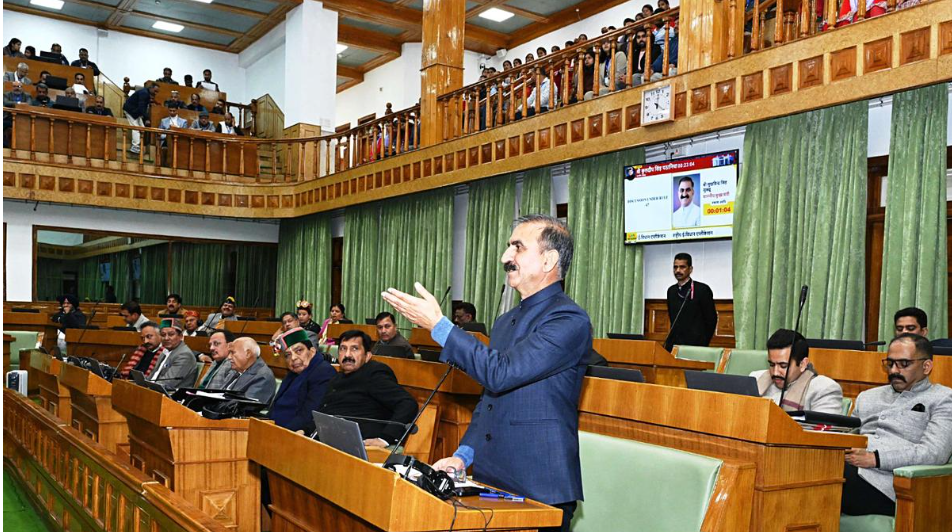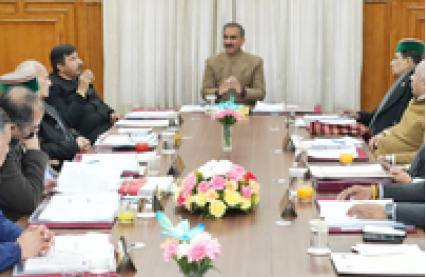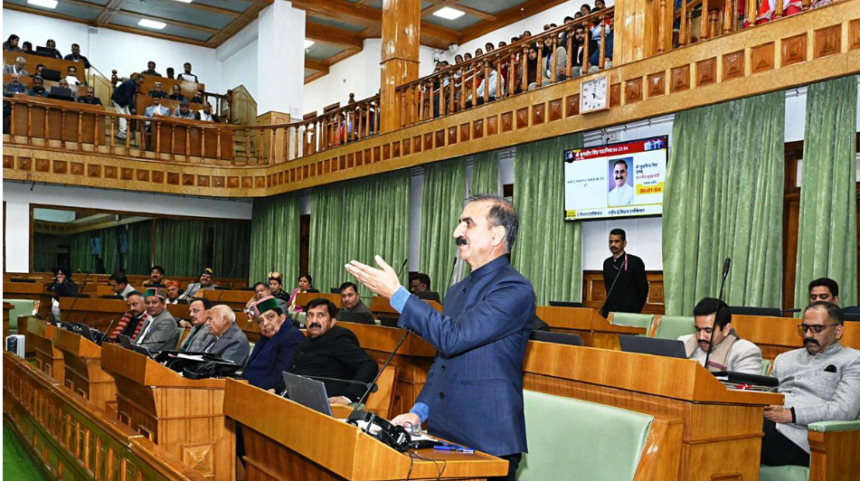1. Introduction: A Landmark Decision in Himachal Pradesh
Himachal a significant move, the Himachal Pradesh Cabinet has approved the renaming of the prestigious Himachal Pradesh Institute of Public Administration (HIPA) in honor of Dr. Manmohan Singh, former Prime Minister of India and a globally acclaimed economist. This decision pays tribute to his substantial contributions to India’s economic policies and governance reforms.
In addition to this renaming, the Cabinet has announced the creation of a Special Task Force (STF) to tackle the grave issues of drug abuse, drug trafficking, and organized crime. These dual measures—honoring an iconic figure and addressing the menace of drug proliferation—mark an important chapter in the state’s journey towards sustainable growth, safety, and development.
2. Renaming HIPA: Recognizing an Architect of Economic Growth
- Why Dr. Manmohan Singh?
The decision to rename HIPA after Dr. Manmohan Singh resonates with his profound influence on India’s administrative and economic policies. As the architect of India’s economic liberalization in 1991, Singh laid the foundation for the country’s growth into a modern economy. His tenure as Prime Minister from 2004 to 2014 saw significant strides in governance, rural development, and global diplomacy. - Significance of HIPA
Established as a premier institution for administrative training, HIPA has played a vital role in improving governance and decision-making processes among civil servants in Himachal Pradesh. Renaming the institute in Singh’s honor symbolizes the integration of visionary ideals with practical administration. The move aims to inspire current and future administrators to embody professionalism, innovation, and integrity in public service. For the more information click on this link
For the more information click on this link
3. Establishment of Special Task Force (STF) on Drug Abuse and Crime
Amid increasing concerns about drug abuse and trafficking in Himachal Pradesh, the Cabinet’s decision to set up an STF underscores a robust commitment to addressing this pervasive issue. Drug-related challenges not only undermine public health but also strain law enforcement, disrupt communities, and feed organized crime.
- Objectives of the STF
The newly constituted STF will aim to:- Dismantle drug trafficking networks.
- Address drug abuse at the grassroots level through prevention and education campaigns.
- Strengthen law enforcement capabilities to combat organized crime.
- Collaborate with neighboring states for coordinated action.
- Multi-Faceted Approach
The STF is envisioned to adopt a comprehensive strategy that includes:- Intelligence gathering and data sharing among law enforcement agencies.
- Implementation of advanced technologies to track the movement of illicit drugs.
- Community-based interventions, such as rehabilitation programs and awareness campaigns.
- Legal reforms to expedite justice in drug-related offenses.
4. Current Drug Crisis in Himachal Pradesh: A Stark Reality
Himachal Pradesh, known for its scenic beauty, has been grappling with the shadow of drug abuse and trafficking. Over the years, the state has become a transit and consumption hub for various substances, including cannabis, opioids, and synthetic drugs.
- Youth in the Crossfire
Among the worst-affected demographic is the youth, with many falling victim to addiction due to peer pressure, unemployment, and lack of awareness. Educational institutions have reported a disturbing rise in substance abuse cases, prompting authorities to seek immediate intervention. - Impact on Law and Order
Drug trafficking has given rise to organized crime, including money laundering and arms trafficking. Local farmers in certain regions have been coerced or lured into cultivating cannabis and opium for illegal profits.
5. Steps Taken So Far: Progress and Challenges
The Himachal government has implemented several initiatives in the past to tackle the drug problem, including:
- The launch of awareness campaigns like Nasha Mukt Himachal (Drug-Free Himachal).
- Establishing de-addiction centers across districts.
- Strengthening police patrols in high-risk areas.
However, challenges persist due to:
- Limited resources and manpower for law enforcement.
- Poor rehabilitation infrastructure for long-term recovery.
- Cross-border trafficking from neighboring states and countries.
6. HIPA’s Role in Capacity Building Amid Rising Challenges
With its focus on administrative training and research, HIPA stands at the intersection of policy development and execution. Renaming it after Dr. Singh can pave the way for a more robust integration of his policy expertise into practical training.
- Empowering Civil Servants
HIPA has trained thousands of administrators who are at the forefront of addressing challenges like drug abuse, crime, and socio-economic disparities. Renaming it after a leader who championed policy-driven development can inspire officers to approach governance innovatively. - Developing Specialized Training Modules
In light of the drug crisis, HIPA can develop training programs tailored for law enforcement, focusing on areas such as drug control strategies, surveillance techniques, and community policing.
7. Linking Security and Development: A Shared Goal
The renaming of HIPA and the creation of the STF underscore a broader vision of aligning security and development goals in Himachal Pradesh. Both measures aim to establish the state as not just a safe haven but also a role model for progressive governance.
- Public Administration in the 21st Century
By strengthening HIPA and dedicating it to a figure synonymous with thoughtful policymaking, the government aims to prepare a cadre of public servants who can tackle contemporary issues such as climate change, digital transformation, and public health. - Combatting Organized Crime
The STF’s initiatives to counter organized crime could serve as a blueprint for other states, showcasing Himachal Pradesh as a pioneer in innovative governance.
8. Broader Implications: National and Regional
- Tribute to Public Service
Renaming HIPA after Dr. Singh reflects a commitment to honoring figures whose contributions have uplifted the nation. It sends a strong message about valuing expertise, humility, and dedication in public life. - Strengthening Federal Cooperation
Drug trafficking is not limited to Himachal Pradesh alone. The STF’s multi-faceted approach, in collaboration with neighboring states, sets a precedent for regional coordination in addressing common challenges.
9. Community Involvement: An Essential Component
To achieve the dual goals of better governance and effective crime prevention, community participation will be crucial.
- Engaging Local Stakeholders
Civil society organizations, educational institutions, and healthcare providers need to be part of the effort to combat drug abuse. From awareness programs in schools to parental support groups, the community’s involvement will ensure the success of the STF’s measures. - Youth Empowerment Programs
Employment initiatives and skill development programs for youth in vulnerable areas can serve as long-term deterrents against substance abuse and criminal activities. For the more information click on this link
For the more information click on this link
10. A Vision for the Future
The Himachal Pradesh Cabinet’s decisions highlight a vision that integrates the principles of good governance, public safety, and tribute to excellence in policymaking.
- Future of HIPA
Under its new name, HIPA can lead groundbreaking initiatives in capacity building and research. By partnering with national and international institutions, it can transform into a global hub for administrative excellence. - Ending the Drug Menace
The STF’s establishment is a timely step in combating the escalating drug crisis. Its success can serve as a model for the nation, showcasing how proactive governance can restore trust and security.
11. Conclusion: Honoring Excellence, Protecting Lives
The renaming of HIPA after Dr. Manmohan Singh and the establishment of a Special Task Force are emblematic of Himachal Pradesh’s dedication to innovation and safety. While one pays homage to a luminary who shaped modern India, the other addresses a pressing crisis affecting countless lives in the state.
By combining inspiration from past leadership with actionable steps for a safer future, Himachal Pradesh is charting a progressive path forward—one where good governance and public welfare stand as twin pillars of its growth. ALSO READ:- Khyber Pakhtunkhwa 16 Labourers Abducted in Pakistan’s Province 2025





